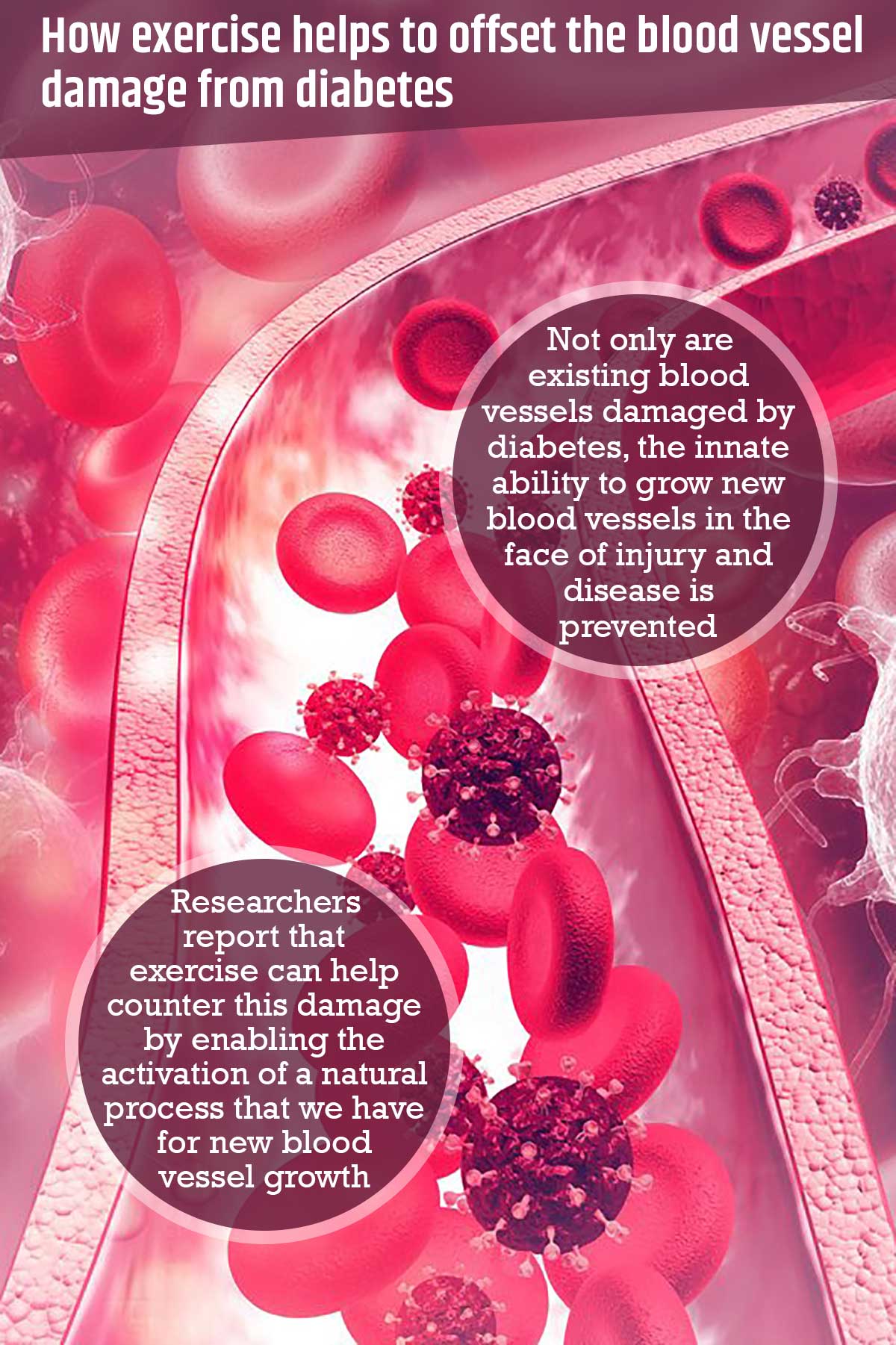The ability to develop new blood vessels is called angiogenesis, and not only are existing blood vessels damaged by diabetes, the innate ability to grow new blood vessels in the face of injury and disease is prevented.
Researchers report that exercise can help counter this damage by enabling the activation of a natural process that we have for new blood vessel growth when existing ones are damaged by diabetes.1✅ JOURNAL REFERENCE
DOI: 10.1096/fj.202101323R
According to the researchers, even a single 45-minute exercise session of moderate-intensity enables more submicroscopic biologically active filled packages known as exosomes to deliver more of the ATP7A protein directly to those cells, which can initiate angiogenesis.
What exosomes carry is determined by where they originate from and where they are going. Although the origin of these helpful exosomes is uncertain, it’s apparent that endothelial cells are one of the places they deliver to. Endothelial cells line the blood vessels and are important for the growth of new blood vessels.
In a type 2 diabetes animal model as well as a few healthy individuals in their 50s, the mice ran on a wheel for 2 weeks, and a single cardio session for the human participants increased ATP7A levels in the exosomes attaching to endothelial cells.
The activity didn’t significantly affect the weight of the mice at that point, but it did increase an endothelial function marker and factors like vascular endothelial growth factor necessary for angiogenesis.
Exercise also increased the amount of extracellular superoxide dismutase, a powerful natural antioxidant, but it’s ATP7A, which also delivers the essential mineral copper to cells, that’s important for making good use of the existing superoxide dismutase.
Superoxide dismutase is an important antioxidant produced by the cells of the vascular smooth muscle in the blood vessel walls as well as in the cells of skeletal muscle, which helps in maintaining healthy reactive oxygen species levels.
Reactive oxygen species is a natural byproduct of oxygen use that’s an important cell signal, which enables a variety of functions. High blood sugar levels in diabetes however lead to high levels of reactive oxygen species that instead impede important normal functions.
The researchers have shown that diabetes reduces ATP7A levels and that plasma circulating exosomes in sedentary type 2 diabetes animal models impair angiogenesis when put in a dish containing human endothelial cells, and also in a wound healing animal model.
Superoxide dismutase is silenced naturally in endothelial cells, and they need to be obtained from other cells, thus the exosome delivery importance. Superoxide dismutase has to bind then to endothelial cells at a spot known as the heparin-binding domain and to enable activation of superoxide dismutase there, the copper transporter ATP7A must also be present.
Superoxide dismutase converts the reactive oxygen species superoxide into hydrogen peroxide once it’s on the scene and active. Hydrogen peroxide is another signaling reactive oxygen species that helps in supporting normal endothelial cell function. Overexpressing superoxide dismutase in human endothelial cells promotes angiogenesis by increasing hydrogen peroxide.
Endothelial cells are regularly using lots of copper, and ATP7A, which transports this essential mineral that we eat in foods like whole grains and nuts, depends on copper itself.
Physical exercise, such as walking or running on a treadmill, prompts the contraction of muscles which subsequently prompts exosome release into the blood.



